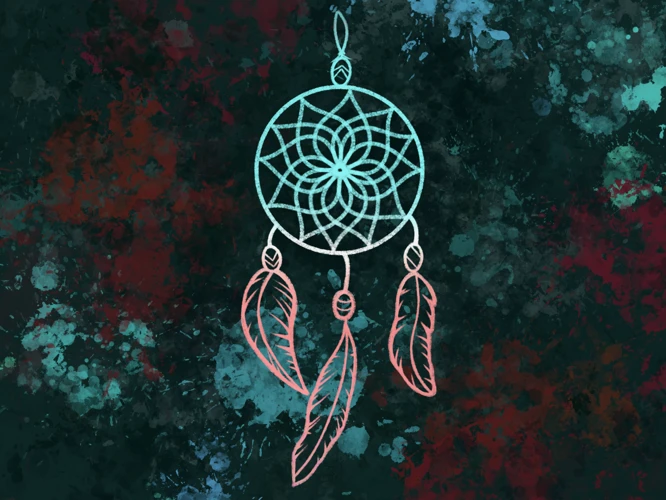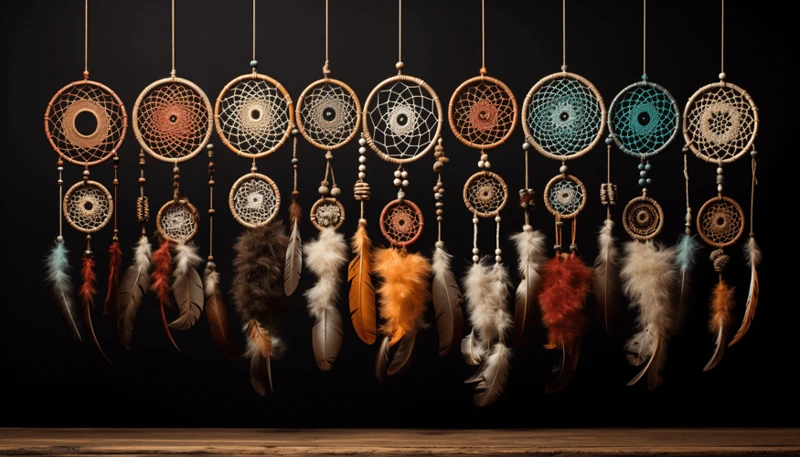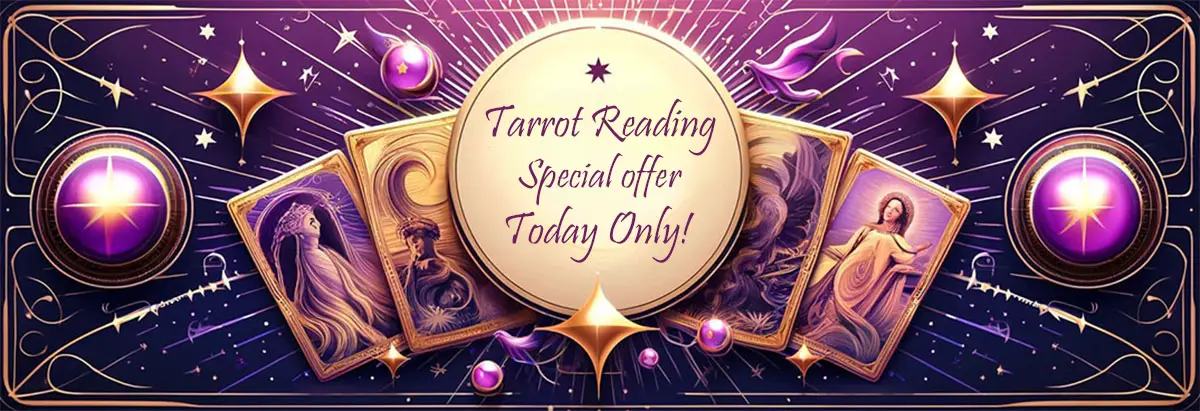Embracing an air of mystery, dream catchers have fascinated people for centuries with their intricate designs and enigmatic symbolism. These beautiful woven hoops, adorned with feathers and beads, have captured the imagination of many, but what do they truly represent? The meaning of dream catchers is a topic that has intrigued people from various cultures and backgrounds, unveiling stories and legends handed down through generations. In this article, we will delve into the origins, symbolism, and interpretations of dream catchers, unraveling the enigma behind these mesmerizing creations. Join us on this captivating journey as we explore the mystique and magic of dream catchers.
The Origins of Dream Catchers

The Origins of Dream Catchers lie in the rich history and cultural traditions of Native American tribes, particularly the Ojibwe People. According to legend, a spiritual elder received a vision from the Spider Woman, the spiritual protector of the Ojibwe tribe. She taught the elder how to create a dream catcher using a willow hoop, sinew, and feathers. This sacred object was believed to trap negative dreams and allow only positive and meaningful ones to pass through. Over time, dream catchers spread beyond the Ojibwe tribe and became popular among other Native American cultures. Today, they have gained worldwide recognition and are cherished for their intricate designs and symbolic significance in various cultures. To learn more about the meanings associated with dream catchers, you can read our article about the meaning of a dream catcher.
1. Legend of the Ojibwe Tribe
The Legend of the Ojibwe Tribe is deeply intertwined with the origins of dream catchers. According to their mythology, an elder named Asibikaashi had a vision of the Spider Woman who came to her in the form of a spider. The Spider Woman taught Asibikaashi how to weave a web-like hoop using willow branches and sinew, symbolizing the interconnectedness of all things. This web became the prototype for the dream catcher, with the intention of capturing negative dreams and thoughts, while allowing positive ones to pass through. Asibikaashi then shared this knowledge with her people, and the tradition of crafting dream catchers spread among the Ojibwe tribe. To learn more about the cultural significance and variations of the dream catcher, you can read our article on the meaning of dream catchers.
2. Cultural Adaptation and Popularity
Cultural adaptation and the growing popularity of dream catchers have led to their incorporation into various art forms and aesthetics. As dream catchers spread beyond the Native American tribes, they began to be adapted and embraced by different cultures around the world. With their mesmerizing design and symbolism, dream catchers started appearing in jewelry, home decor, and even as tattoo designs. The concept of the dream catcher resonated with people across different backgrounds, as it symbolizes protection, positive energy, and the pursuit of meaningful dreams. Today, dream catchers have become a beloved and cherished symbol, embraced by individuals seeking to connect with their spiritual beliefs and bring positive energy into their lives.
The Symbolism of Dream Catchers

The Symbolism of Dream Catchers is multifaceted and deeply rooted in spiritual beliefs. One of the primary meanings associated with dream catchers is their ability to filter out negative dreams. As the legend goes, the woven net in the center of the dream catcher catches the bad dreams, allowing them to dissipate with the morning light. On the other hand, positive dreams are believed to pass through the net and descend upon the sleeper, bringing them guidance, inspiration, and good fortune. Additionally, dream catchers are seen as symbols of spiritual protection, guarding against evil spirits and promoting a sense of security and well-being. Their circular shape represents the cyclical nature of life and the interconnectedness of all things. Each component of a dream catcher, from the hoop to the feathers and beads, holds its own significance, enhancing the overall symbolism and power of this ancient talisman.
1. Filtering Out Negative Dreams
One of the primary purposes of dream catchers is filtering out negative dreams. According to belief, as dreams float through the air, a dream catcher acts as a spiritual filter. The woven web inside the hoop is believed to catch any negative dreams or thoughts, trapping them within the web until the morning sunlight cleanses and purifies them, thus preventing these dreams from reaching the dreamer. This ensures that only positive and uplifting dreams can pass through the center hole and enter the sleeper’s mind. The intricate network of the dream catcher’s web is symbolic of the complex journey dreams take as they navigate through our subconscious minds. As the dreamer rests peacefully, the dream catcher diligently works to rid their sleeping realm of negativity, allowing only pleasant dreams to embrace their slumber.
2. Capturing Positive Dreams
Capturing Positive Dreams is another significant aspect of the symbolism behind dream catchers. As dreams pass through the intricate webbing of the dream catcher, it is believed that they filter out the negative energy and allow only positive dreams to slip through. These positive dreams then glide down the feathers and gently enter the dreamer’s mind during sleep. This aspect of dream catchers represents the importance of inviting positivity and uplifting experiences into one’s life. By capturing positive dreams, dream catchers serve as a reminder to focus on the good, encouraging a sense of hope, inspiration, and well-being.
3. Spiritual Protection
Dream catchers are not only viewed as guardians against negative dreams and as collectors of positive ones, but they also hold spiritual significance in providing protection. According to belief, the intertwined web inside the hoop acts as a shield, preventing negative energies or spirits from entering the dreams of those who possess dream catchers. This spiritual protection is thought to create a safe and harmonious space during sleep, allowing individuals to experience a sense of tranquility and well-being. The feathers and charms hanging from the bottom of the dream catcher are often seen as additional elements of protection, with each feather symbolizing a different aspect, such as courage, wisdom, or strength. The spiritual aspect of dream catchers aligns with their symbolic and cultural significance, making them more than just decorative pieces hanging above beds.
Interpreting Dream Catcher Dreams

Interpreting Dream Catcher Dreams involves understanding the symbolism behind the dreams and the dream catcher itself. As a symbol, dream catchers are associated with filtering out negative dreams and capturing positive ones. When analyzing dreams involving dream catchers, it is essential to consider the personal and cultural significance attributed to these objects. Additionally, images and symbols within the dreams can offer valuable insights. For example, feathers may represent spiritual guidance or messages from the divine, while intricate web patterns could symbolize interconnectedness or the complexities of life. Each dream and its interpretation are unique to the individual, making the process of understanding dream catcher dreams a deeply personal and introspective journey.
1. Dream Catchers as a Symbol
Dream Catchers serve as a powerful symbol in many cultures, representing the belief in the power of dreams and their ability to guide and protect individuals. This symbolism stems from the understanding that dreams hold deep significance and can offer insights into one’s subconscious mind, desires, and fears. As a symbol, dream catchers are associated with the act of catching and filtering out negative dreams, allowing only positive and uplifting ones to enter the dreamer’s consciousness. They are believed to act as a spiritual tool, providing a sense of comfort, guidance, and protection during sleep. The intricate weaving of the dream catcher is thought to symbolize the interconnectedness of all things in the universe, while the feathers attached to it represent air, a vital element for dreams to travel. In this way, dream catchers symbolize the harmonious relationship between the dreamer and the spiritual realm of dreams.
2. Images and Symbols within Dreams
When it comes to dream catchers, the symbolism goes hand in hand with the dreams they capture. Dreams are known to contain images and symbols that hold personal significance and meaning to the dreamer. These symbols can vary greatly from person to person and can incorporate elements from one’s own experiences, culture, or subconscious mind. The intricate patterns and designs of the dream catcher itself can also be interpreted symbolically. For example, the woven web may represent the interconnectedness of all living things, while the feathers and beads can symbolize different aspects of spirituality or personal beliefs. Exploring the images and symbols within dreams can provide valuable insights and help individuals gain a deeper understanding of their own subconscious thoughts and emotions.
Dream Catcher Variations

Dream Catchers have evolved over time, resulting in a wide array of dream catcher variations that cater to different tastes and preferences. Traditional dream catchers typically feature a willow hoop with a intricate web woven in the center and various symbolic decorations such as feathers, beads, and gemstones. These variations often reflect the personal beliefs and cultural background of the creator. In modern interpretations, dream catchers may incorporate different materials, colors, and designs, allowing for a more personalized touch. Some modern dream catchers may even incorporate non-traditional elements like shells, crystals, or fabric patterns. The diverse range of dream catcher variations ensures that individuals can find one that resonates with their unique style and spiritual beliefs.
1. Traditional Dream Catchers
Traditional Dream Catchers are deeply rooted in the spiritual beliefs and customs of Native American tribes. These dream catchers were traditionally handcrafted using natural materials such as willow hoops, sinew, and feathers. The hoop, typically in a circular shape, symbolized the circle of life and represented unity and harmony. The intricate weaving within the hoop was believed to filter out negative dreams, allowing only positive dreams to pass through and descend upon the dreamer. Feathers attached to the bottom of the dream catcher were said to guide these positive dreams towards the sleeper. Each element of a traditional dream catcher held symbolic significance, creating a powerful and meaningful object that served both a practical and spiritual purpose.
2. Modern Interpretations
Modern Interpretations of dream catchers have taken on new and creative forms, reflecting the evolving perspectives and artistic expressions of individuals and cultures. While traditional dream catchers feature a circular design with webs and feathers, modern variations experiment with different shapes, materials, and embellishments. Some artists incorporate colorful beads, crystals, and even LED lights into their designs, adding a contemporary touch. Additionally, dream catchers can now be found in various sizes, from small ornamental pieces to large decorative artworks. These modern interpretations often serve as decorative items, gifts, or even fashion accessories, appealing to individuals who appreciate the enchanting beauty and symbolic significance of dream catchers.
Dream Catchers in Different Cultures
Dream Catchers have transcended their Native American origins and have found their way into various cultures around the world. Here are a few examples of how dream catchers are embraced in different cultures:
1. Native American Culture: Dream catchers hold deep spiritual significance in Native American culture. They are believed to protect individuals from negative energy, nightmares, and promote positive dreams. The Ojibwe tribe, where dream catchers originated, consider them powerful symbols of protection and harmony.
2. Aboriginal Culture: Dreaming is an integral part of Aboriginal culture, and dream catchers have become symbolic of this connection. They are often used in rituals and ceremonies to bring dreams and visions into reality. Aboriginal dream catchers typically feature intricate designs and natural materials found in their environment.
3. Other Cultural Influences: Dream catchers have also been adopted by other cultures. In Buddhist and Hindu practices, dream catchers are believed to aid in meditation and spiritual growth. In modern Western culture, dream catchers have become popular decorative items, believed to bring positive energy and harmony to living spaces.
Dream catchers’ universal appeal lies in their ability to connect individuals with their dreams, protect their well-being, and serve as beautiful cultural artifacts.
1. Native American Culture
Native American culture holds a significant place in the history and development of dream catchers. Among Native American tribes, dream catchers are deeply rooted in spiritual beliefs and traditions. The Ojibwe tribe, in particular, considers dream catchers as protective talismans that ward off negative spirits and nightmares. According to their belief, dream catchers act as filters, allowing only positive dreams and visions to pass through while trapping the rest. Dream catchers are often seen as a symbol of unity and connection with the spiritual world in Native American culture. Each element of the dream catcher, from the intricate web to the feathers and beads, carries specific meanings that portray the tribe’s connection to nature and the spirit realm. The symbolism and significance of dream catchers in Native American culture have made them a cherished aspect of their heritage.
2. Aboriginal Culture
2. Aboriginal Culture also holds a significant place in the history of dream catchers. While the origins of dream catchers are primarily associated with Native American tribes, they have also been embraced by Aboriginal cultures in Australia. In Aboriginal belief systems, dream catchers are known as “dream snare” or “spirit snare.” These traditional dream catchers, made from natural materials such as sticks, feathers, and fur, serve a similar purpose to their Native American counterparts. They are believed to filter out negative dreams and allow positive and informative dreams to pass through. Embraced as a symbol of spiritual protection and guidance, dream catchers continue to play an integral role in Aboriginal cultures, serving as a connection to the dream realm and ancestral spirits.
3. Other Cultural Influences
Other Cultural Influences have contributed to the spread and adaptation of dream catchers beyond Native American and Aboriginal cultures. In recent years, dream catchers have gained popularity in various communities around the world, becoming a symbol of spirituality, protection, and artistic expression. For example, dream catchers have been incorporated into New Age practices, where they are believed to enhance positive energy and promote good dreams. Additionally, dream catchers have been embraced by individuals who appreciate their aesthetic appeal and unique craftsmanship, regardless of their cultural background. This cross-cultural appreciation and adoption of dream catchers highlight their universal appeal and the timeless allure of their mystical symbolism.
Conclusion
In conclusion, dream catchers continue to captivate us with their allure and mystique. Originating from the Ojibwe tribe, these intricate woven hoops symbolize much more than just an aesthetically pleasing decoration. Dream catchers are believed to filter out negative dreams, capture positive ones, and offer spiritual protection. They hold deep cultural significance and have become popular in various cultures around the world. Whether you have a traditional dream catcher or a modern interpretation, these enchanting creations serve as reminders of our dreams, aspirations, and ability to navigate the realm of the subconscious. So, hang a dream catcher and let it weave its magic, guiding you towards a world of positivity, inspiration, and spiritual harmony.
Frequently Asked Questions
1. What is the significance of the spider in dream catchers?
The spider is significant in dream catchers as it is believed to be the spiritual guide and protector of the dream catcher. According to Native American legends, the Spider Woman taught the Ojibwe people how to create dream catchers, making the spider an integral part of their symbolism.
2. Can dream catchers really catch dreams?
While dream catchers cannot physically catch dreams, they are believed to filter out negative dreams and only allow positive dreams to pass through. They act as symbolic tools for protection and guidance during sleep.
3. What materials are traditionally used to make dream catchers?
Traditional dream catchers are made using a willow hoop, sinew or thread for weaving, and feathers and beads for decoration. These materials carry their own symbolic meanings and are believed to enhance the dream catcher’s spiritual properties.
4. Can anyone hang a dream catcher in their home?
Yes, anyone can hang a dream catcher in their home. Dream catchers are not limited to specific cultures or beliefs. They have become popular decorative items and can be enjoyed and appreciated by people from various backgrounds.
5. How do I choose the right size of dream catcher?
The size of a dream catcher is a matter of personal preference. Consider the space where you plan to hang it and choose a size that fits well. Keep in mind that larger dream catchers may have more intricate designs and be more visually striking.
6. Can dream catchers be used as protective charms?
Yes, dream catchers are often used as protective charms. They are believed to ward off negative energy, promote positive vibes, and offer spiritual protection. Many people hang them near their beds or in their homes for this purpose.
7. Can dream catchers be used for meditation?
Yes, dream catchers can be used as aids for meditation. The intricate designs and soothing presence of dream catchers can help create a calming and peaceful environment, making them a valuable tool for meditation practices.
8. Are there different meanings associated with the colors of dream catchers?
Yes, different colors can hold different meanings in dream catchers. For example, white is often associated with purity and spirituality, while red can symbolize power and energy. The choice of colors in a dream catcher can add depth and resonance to its overall symbolism.
9. Can dream catchers be given as gifts?
Absolutely! Dream catchers make thoughtful and symbolic gifts. They can be given to loved ones as a token of protection, support, and positive energies. Consider the recipient’s personal beliefs and preferences when selecting a dream catcher as a gift.
10. Do different styles of dream catchers have different meanings?
Yes, different styles of dream catchers can have different meanings. Traditional dream catchers often follow specific patterns and designs that hold cultural significance, while modern interpretations may incorporate unique elements and personal symbolism. It’s important to understand the specific style and its associated meanings to fully appreciate a dream catcher.


